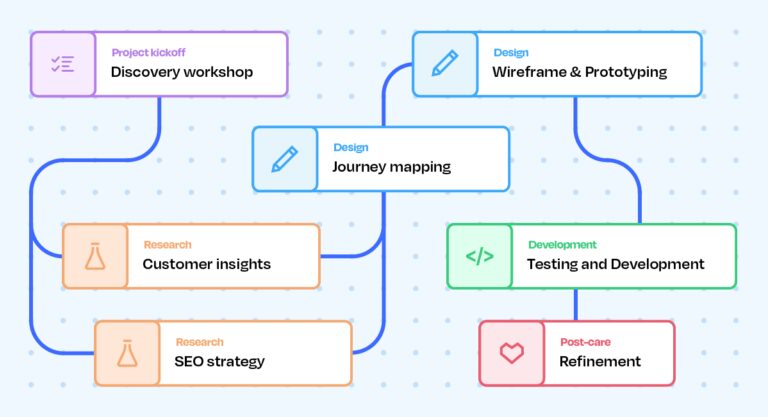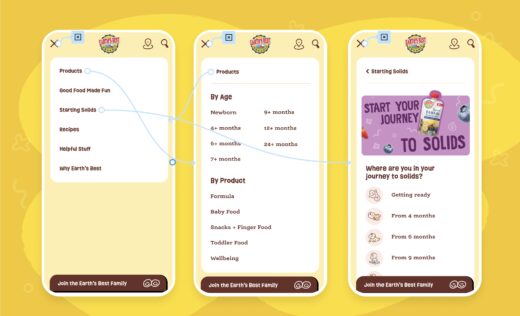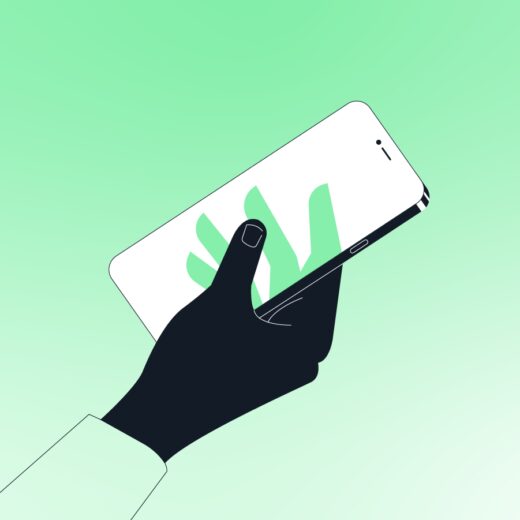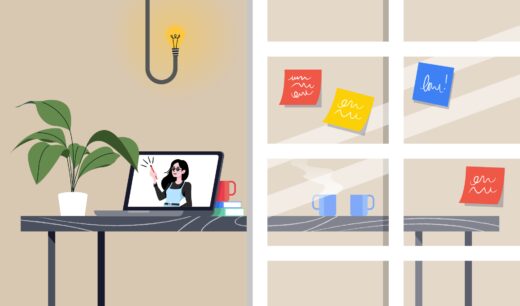Why investing in the planning phase of your website is the key to its success
5 min read

A successful website isn’t just about the final product simply looking great. It’s about building something that works for your users, aligns with your business goals, and avoids any costly surprises along the way.
Achieving this starts with dedicating time and effort to the planning phase, so let’s dive into why embracing the planning phase with an audience-first approach will elevate your website project from “good enough” to truly exceptional.
Build a strong foundation by aligning goals and understanding users
The discovery phase of a website project is where it should all begin, like any good book it lays the foundation for a great story.
We start by hosting an all-important workshop and collaborative session. This sees both client and agency teams aligning on business objectives and user needs. For instance, our approach often includes facilitated workshops to explore:
Business goals and brand positioning
Target audiences’ motivations, pain points, and behaviours
Delving into the full digital ecosystem the website will operate in
Sustainability and accessibility requirements
MoSCoW task prioritisation to meet client and audience needs
This creates a solid foundation, ensuring your site is not only visually appealing but also highly functional for its audience.
User insights to inform user research to make direct connections with the audience
Before diving deeper into the planning phase, some clients wish to invest in defining clear objectives for the project by conducting user interviews. I say ‘some’ because this isn’t always necessary and it truly boils down to the size of your website, and the investment you want to put into positioning for your true audience and not just an assumed one. It also isn’t a must for all clients as user research may already be complete via focus groups or marketing/brand workshops.
However, when a digital agency runs these, it focuses on uncovering the needs, challenges, and behaviours of the target audience, aligning with the project’s scope and goals. Carefully select your participants who represent a diverse cross-section of the end users and tailor your questions to elicit detailed insights, mixing open-ended and scenario-based queries.
Don't forget, the format matters too. We can look at combining one-on-one interviews, focus groups, or surveys depending on your needs. During these sessions, foster a comfortable atmosphere to encourage honest feedback. For QAs, use the current website, if looking for frustrations and blockers in the current environment - or test prototypes or basic mockups to test assumptions and validate initial ideas about functionality or user flow.
We then document and analyse the findings to summarise key insights into actionable takeaways and share them with the client to demonstrate and guide the planning phase.
By grounding the strategy in user-driven insights, we can avoid costly missteps and deliver websites that truly address user expectations.
Thinking beyond the homepage with audience personas and customer journey mapping
Websites aren’t just about single interactions; they’re about journeys. Mapping user paths from discovery to conversion helps our team anticipate blockers and reduce user friction.
Should a user research piece run successfully we fold this insight into the production of our audience persona and journey mapping. Taking into account the research piece to inform our decision-making.
This is integral to the planning and designing of clear calls to action that are tailored to different audience needs, so whether a user wants to “get a quote” or “download a brochure,” their journey feels seamless.
The power of prototypes for bridging concepts and reality
Wireframes and clickable prototypes take planning to the next level. These tools allow stakeholders to experience a draft of the site’s functionality and flow. Think of it as a “test drive” for your website, complete with interactive elements like navigation menus and forms.
Prototyping achieves three key outcomes:
Client clarity: Stakeholders can see and experience the design rather than imagining it from static mockups.
Early feedback: Teams can refine design and functionality before expensive development stages.
Development alignment: Developers receive clear specifications for smoother handovers.
This approach not only removes uncertainty but also reduces the risk of scope creep, missed deadlines, and unnecessary costs.
Designing for your audience, not assumptions with real-world testing
User testing is often underutilised but is an absolute game-changer. It helps us uncover insights about how actual users interact with prototypes or early versions of a website.
This stage goes beyond analytics and surveys—it’s about observing behaviours. At Abstrakt, for example, external testing involves sending participants specific tasks to complete on a clickable prototype. These participants record their experience, offering real insights into what works and what doesn’t. This is crucial for validating structure, navigation, and content hierarchy before significant investment is made.
Prototypes and user testing aren’t just ‘nice to have.’ They're the bridge between what you imagine your website to be and what your users actually need. This upfront investment saves time, money, and headaches later in the project!
Perfection is a process with iteration and refinement
The best websites don’t come from a single design phase; they evolve through feedback and iteration. At Abstrakt, we use insights from internal and external testing to refine everything, from sitemap structure to micro-interactions. This iterative process ensures that by the time development begins, every element aligns with both user expectations and business goals.
Planning isn’t optional—it’s integral
Cutting corners in the planning phase might seem tempting, but it’s a decision that often leads to missed opportunities and larger costs later in the project. By focusing on audience-first approaches, real-world testing, and interactive prototyping, you’re not just building a website—you’re building an experience that works for your users and delivers real results.
So, before diving straight into design and development, ask yourself: “Have I truly planned for success?”
What to ask when engaging an agency
To support our potential clients during the pitch phase, we like to ensure the planning phase is fully understood and demonstrates the level of planning needed in your pitch.
Here’s a handy checklist for you to follow to engage an agency.
The devil is in the details - so write up a solid planning requirement in your brief
Tell us how important the planning process is to you and your organisation
Ask questions - in a physical pitch, time is tight, so ensure you delve into those questions and raise any concerns regarding a planning phase, workshop, research etc
Read all the documentation! It doesn't stop at the pitch, ordinarily, many accompanying documents are shared during the pitch process. Make sure you read and understand what your agency is proposing
Don’t be afraid to challenge. As your partner, an agency is there to get the best out of the project. So if there is something your agency has missed or not understood, raise your hand.
Alongside your questions, your agency will likely have questions so you can expect to have your planning steered along to support you and your business, in getting the most out of your discovery phase. Discover the type of questions an agency may ask with our top 5 questions you can expect in a web design workshop article.

Nikki Taylor
Nikki leads our digital projects to guarantee exceptional quality at every step of project delivery with a background in UX design.
She has specialist knowledge in project management and digital design.
Connect on LinkedIn.
How prototyping fosters innovation
2.5 min read

What to consider before you engage a web design agency
6 min read

Top 5 questions you can expect in a web design workshop
5.5 min read
